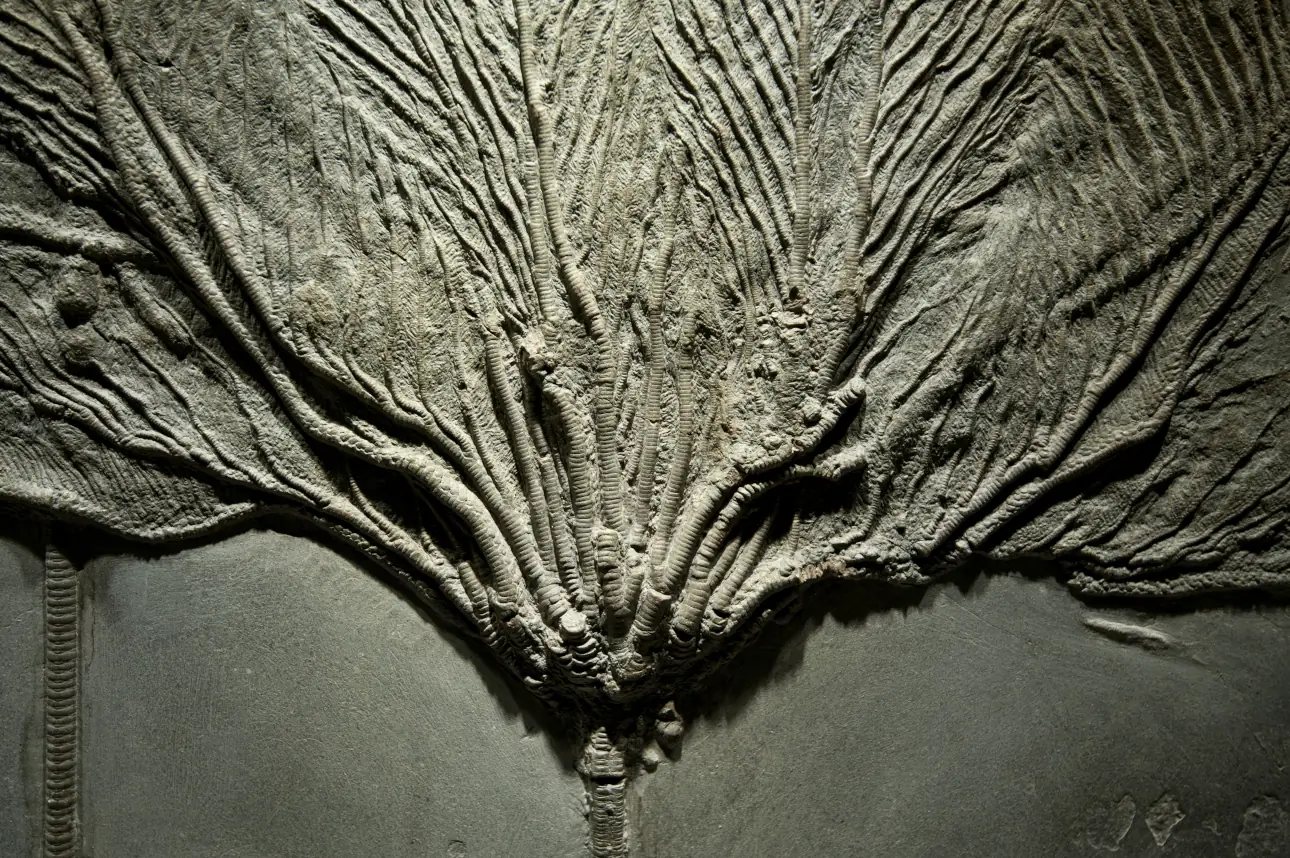Crinoids: A Dive into Earth’s Ancient Marine Residents
Crinoids are an ancient group of marine animals that first appeared in the seas of the Middle Cambrian, about 300 million years before dinosaurs. With delicate, plant-like forms anchored to the seafloor by slender stalks, these marine invertebrates thrived in shallow water environments throughout the Paleozoic and Mesozoic eras. Often extraordinarily well-preserved as fossils, crinoids offer a unique glimpse into the ancient seas that preceded today's marine ecosystems. Their lingering presence along coastlines also gives rise to local mythologies, with fragmented columnals viewed as magical charms by beachcombers across the ages. This enduring yet enigmatic group remains vital to reconstructing paleoenvironments and unraveling the complex chronology of life's progression.
Anatomy of a Crinoid
The anatomy of a crinoid revolves around its important calcite skeleton, which is rarely found intact due to the fragility of its slender stalk. The main body, known as the calyx, contains vital organs and is composed of multiple fused plates. Attached to the top of the calyx is an array of feathery arms used for filter feeding. These arms extend outward to form a net-like structure for capturing planktonic particles from passing currents. The calyx and arms attach at the base to a segmented stalk constructed from stacked disc-like ossicles known as columnals. The columnals connect the crinoid to the sea floor but can also break apart after death, leaving behind the iconic "crinoid beads" found washed up on beaches. While the delicate arms and soft tissues decay rapidly after death, the ossified calyx and columnals mineralize into stone, allowing for impressive preservation in the fossil record. The articulated skeletal remains of crinoids offer a trove of information about these ancient creatures and the environments they inhabited.
Crinoids as Environmental Indicators
Unveiling Earth's Chronology through Crinoids
Crinoids: Sea Lilies and Legends
Conclusion: A Glimpse into Earth's Ancient Oceans
Here are 7 frequently asked questions about crinoids:
Interested in Owning a Crinoid Fossil?
If you're captivated by the world of Crinoids and would like to have a piece of their ancient legacy, consider exploring our collection of Crinoid fossils at Morocco Fossils. Our selection includes a variety of Crinoid specimens, each holding a unique story from the distant past.
Visit Morocco Fossils to discover our exquisite Crinoid offerings and bring a piece of prehistoric history into your life.
